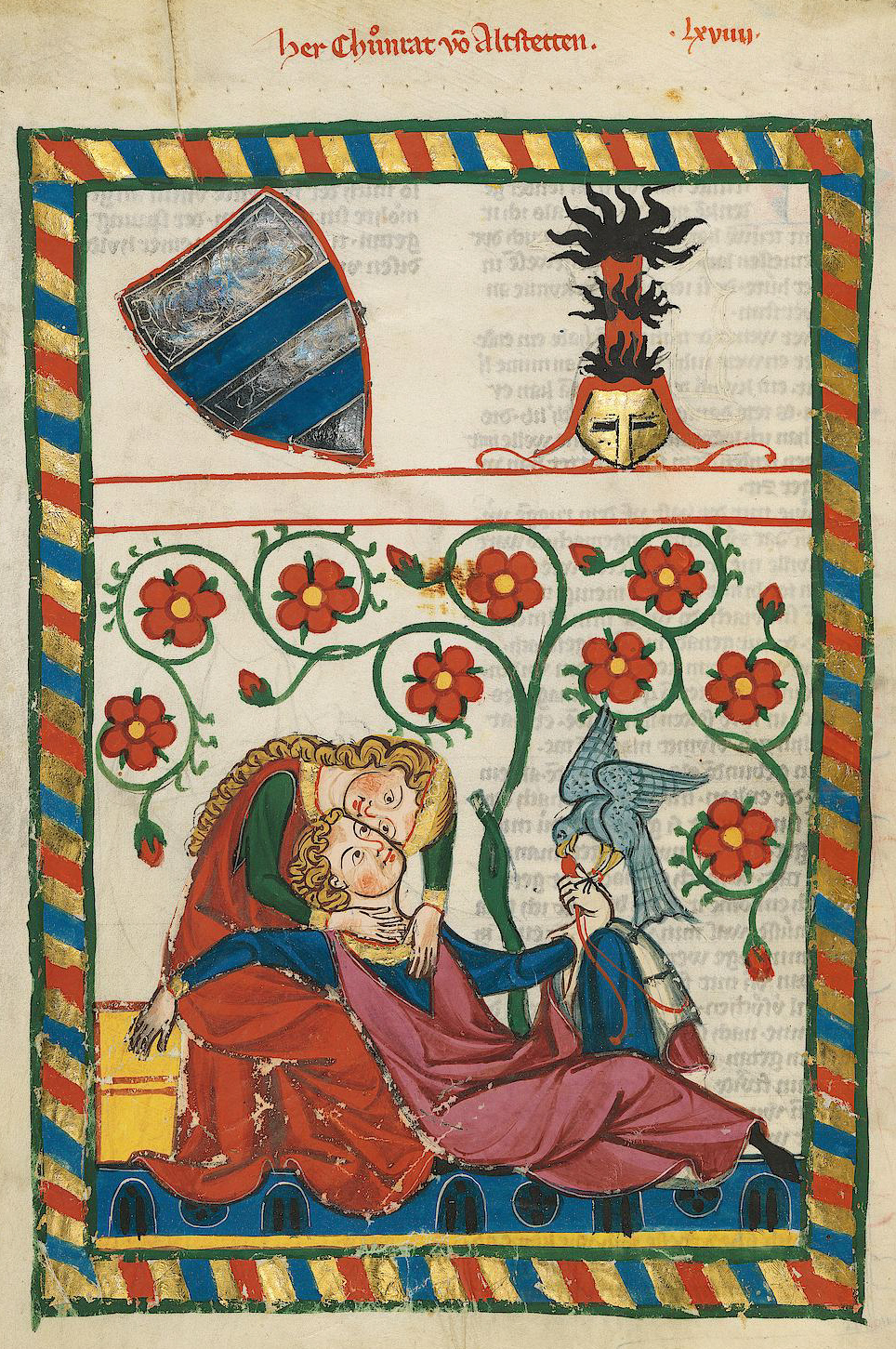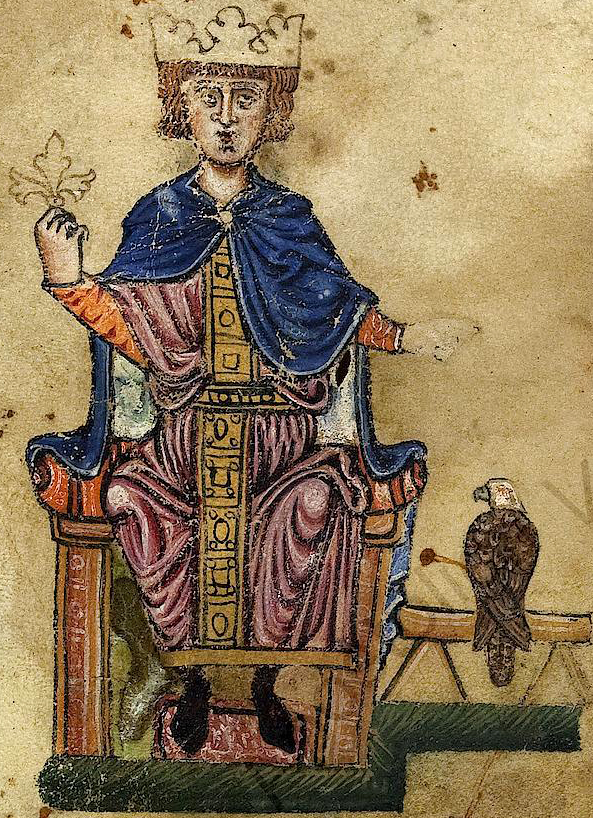Palatine library on:
[Wikipedia]
[Google]
[Amazon]



 The Bibliotheca Palatina (" Palatinate library") of
The Bibliotheca Palatina (" Palatinate library") of
Universitätsbibliothek Heidelberg
{{Authority control Libraries in Germany History of Heidelberg Defunct libraries 1550s establishments in the Holy Roman Empire Collections of the Vatican Museums Art and cultural repatriation Electoral Palatinate Libraries in Vatican City



 The Bibliotheca Palatina (" Palatinate library") of
The Bibliotheca Palatina (" Palatinate library") of Heidelberg
Heidelberg (; Palatine German language, Palatine German: ''Heidlberg'') is a city in the States of Germany, German state of Baden-Württemberg, situated on the river Neckar in south-west Germany. As of the 2016 census, its population was 159,914 ...
was the most important library of the German Renaissance, numbering approximately 5,000 printed books and 3,524 manuscripts. The Bibliotheca was a prominent prize captured during the Thirty Years' War
The Thirty Years' War was one of the longest and most destructive conflicts in European history, lasting from 1618 to 1648. Fought primarily in Central Europe, an estimated 4.5 to 8 million soldiers and civilians died as a result of battle ...
, taken as booty by Maximilian of Bavaria, and given to the Pope in a symbolic and political gesture. While some of the books and manuscripts are now held by the University of Heidelberg
}
Heidelberg University, officially the Ruprecht Karl University of Heidelberg, (german: Ruprecht-Karls-Universität Heidelberg; la, Universitas Ruperto Carola Heidelbergensis) is a public research university in Heidelberg, Baden-Württemberg, ...
, the bulk of the original collection is now an integral part of the Bibliotheca Apostolica Vaticana at the Vatican.
The important collection of German-language manuscripts have shelf-marks beginning cpg (older usage: Cod. Pal. ger., for "Codices Palatini germanici"), while the vast Latin manuscript collection has shelf-marks with cpl (or Cod. Pal. lat., for "Codices Palatini latini").
Foundation
In the 1430s, ElectorLouis III Louis III may refer to:
* Louis the Younger, sometimes III of Germany (835–882)
* Louis III of France (865–882)
* Louis the Blind, Louis III, Holy Roman Emperor, (c. 880–928)
* Louis the Child, sometimes III of Germany (893–911)
* Louis I ...
founded the ''Stiftsbibliothek'' in the Heiliggeistkirche, which had good light for reading. This library formed the core of the Palatine Collection established by Elector Ottheinrich in the 1550s, together with the University Library Heidelberg. Essential manuscripts from the original Bibliotheca Palatina include the Carolingian " Lorsch Evangelary", the ''Falkenbuch'' (''De arte venandi cum avibus
''De Arte Venandi cum Avibus'', literally ''On The Art of Hunting with Birds'', is a Latin treatise on ornithology and falconry written in the 1240s by the Holy Roman Emperor Frederick II. One of the surviving manuscripts is dedicated to his son ...
'', cpl 1071, commissioned by Frederick II), and the Codex Manesse
The Codex Manesse (also Große Heidelberger Liederhandschrift or Pariser Handschrift) is a ''Liederhandschrift'' (manuscript containing songs), the single most comprehensive source of Middle High German ''Minnesang'' poetry, written and illustrat ...
(cpg 848)
Further important manuscripts were acquired from the collection of Ulrich Fugger
The House of Fugger () is a German upper bourgeois family that was historically a prominent group of European bankers, members of the fifteenth- and sixteenth-century mercantile patriciate of Augsburg, international mercantile bankers, and vent ...
(d. 1584), notably the illustrated Sachsenspiegel
The (; gml, Sassen Speyghel; modern nds, Sassenspegel; all literally "Saxon Mirror") is one of the most important law books and custumals compiled during the Holy Roman Empire. Originating between 1220 and 1235 as a record of existing loc ...
(cpg 164). Joseph Scaliger considered this Fugger Library superior to that owned by the Pope; the manuscripts alone were valued at 80,000 crowns, a very considerable sum in the 16th century.The ''Classical Journal'' for March and June 1816, page 212.
Thirty Years War
The Palatinate suffered heavily in theThirty Years War
The Thirty Years' War was one of the longest and most destructive conflicts in European history, lasting from 1618 to 1648. Fought primarily in Central Europe, an estimated 4.5 to 8 million soldiers and civilians died as a result of battl ...
, and in 1622 Heidelberg was sacked by the Catholic League, whose general Count von Tilly was in the employ of Maximilian of Bavaria. As book plundering was a source of both Catholic and Protestant cultural triumph during the Thirty Year's War, the occupiers jostled for control of the library.
Maximilian originally wanted to add the ''Bibiliotheca Palatina'' to his own library in Munich. Ferdinand II also sought it, sending counter-instructions to Tilly to keep it for his own collection in Vienna. Although many books were torn or "dispersed among private hands" during the sack, Pope Gregory XV
Pope Gregory XV ( la, Gregorius XV; it, Gregorio XV; 9 January 15548 July 1623), born Alessandro Ludovisi, was head of the Catholic Church and ruler of the Papal States from 9 February 1621 to his death in July 1623.
Biography
Early life
Al ...
convinced Maximilian to present the remaining manuscripts to the Vatican as "a sign of his loyalty and esteem"''Luther: Lectures on Romans'', ed. by Wilhelm Pauck. Westminster John Knox
Press, 1961. . Page xxii. and to support his claim to the Palatinate's electoral title. The preparations to secure transport the collection to Rome were supervised by the Greek scholar Leo Allatius, sent to Heidelberg by the Vatican.
The Bibliotecha was a prominent prize captured during the Thirty Years' War. The victors were concerned not just with carrying away the collection and thus stripping the Calvinist party of one of its most important intellectual symbols; they also had wanted to eliminate all documentation of the library's provenance. The capture of the Palatine library was a carefully orchestrated symbolic act of looting in the Thirty Years' War, and triggered further acts of similar confiscations throughout the course of the hostilities.
Thus, as of 1623, the entire remaining library had been incorporated into the Bibliotheca Apostolica Vaticana, with each volume preserving, as a memorial, a leaf with the Wittelsbach
The House of Wittelsbach () is a German dynasty, with branches that have ruled over territories including Bavaria, the Palatinate, Holland and Zeeland, Sweden (with Finland), Denmark, Norway, Hungary (with Romania), Bohemia, the Electorate ...
arms.
By the Treaty of Tolentino
{{unreferenced, date=June 2018
The Treaty of Tolentino was a peace treaty between Revolutionary France and the Papal States, signed on 19 February 1797 and imposing terms of surrender on the Papal side. The signatories for France were the French Di ...
(1797), the Pope ceded 37 manuscripts to the French Republic, which had them deposited in the Bibliothèque nationale
A library is a collection of materials, books or media that are accessible for use and not just for display purposes. A library provides physical (hard copies) or digital access (soft copies) materials, and may be a physical location or a vi ...
in Paris
Paris () is the Capital city, capital and List of communes in France with over 20,000 inhabitants, most populous city of France, with an estimated population of 2,165,423 residents in 2019 in an area of more than 105 km² (41 sq mi), ma ...
. After the Congress of Vienna
The Congress of Vienna (, ) of 1814–1815 was a series of international diplomatic meetings to discuss and agree upon a possible new layout of the European political and constitutional order after the downfall of the French Emperor Napoleon B ...
in 1814–1815 decreed "the general restoration r returnof works of art, of which the French had robbed other countries," the contested manuscripts were conveyed from Paris to Heidelberg, rather than to Rome. In 1816, Prince Hardenberg and Ignaz Heinrich von Wessenberg
Ignaz Heinrich Karl von Wessenberg (4 November 17749 August 1860) was a German writer and scholar, and liberal Catholic churchman as well as Vicar general and administrator of the Diocese of Constance. Imbued from his early youth with Josephinist ...
persuaded Pope Pius VII to make a gift of 852 manuscripts, mostly in German, to the University of Heidelberg
}
Heidelberg University, officially the Ruprecht Karl University of Heidelberg, (german: Ruprecht-Karls-Universität Heidelberg; la, Universitas Ruperto Carola Heidelbergensis) is a public research university in Heidelberg, Baden-Württemberg, ...
.
For the University Jubilee, some other books were temporarily brought back from the Vatican and were displayed at the Heiliggeistkirche in 1986.
See also
* Index of Vatican City-related articlesReferences
Further reading
* Leonard Boyle (ed.): Bibliotheca Palatina, Druckschriften, Microfiche Ausgabe, München 1989-1995, (Gesamtwerk), (Index) * Elmar Mittler (ed.): Bibliotheca Palatina, Druckschriften, Katalog zur Mikrofiche-Ausgabe, Band 1-4, München 1999, *Ludwig Schuba, Die medizinischen Handschriften der Codices Palatini Latini in der Vatikanischen Bibliothek, Wiesbaden, 1981, Dr. Ludwig Reichert Verlag (Kataloge der Universitätsbibliothek Heidelberg 1), *Ludwig Schuba, Die Quadriviums-Handschriften der Codices Palatini Latini in der Vatikanischen Bibliothek, Wiesbaden 1992, Dr. Ludwig Reichert Verlag (Kataloge der Universitätsbibliothek Heidelberg 2), *Dorothea Walz, Die historischen und philosophischen Handschriften der Codices Palatini Latini in der Vatikanischen Bibliothek (Cod. Pal. Lat. 921 - 1078), Wiesbaden 1999, Dr. Ludwig Reichert Verlag (Kataloge der Universitätsbibliothek Heidelberg 3),External links
Universitätsbibliothek Heidelberg
{{Authority control Libraries in Germany History of Heidelberg Defunct libraries 1550s establishments in the Holy Roman Empire Collections of the Vatican Museums Art and cultural repatriation Electoral Palatinate Libraries in Vatican City